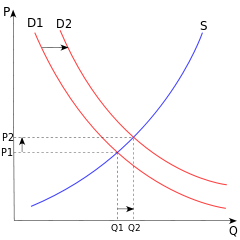The theory of today’s economy, that is, the neoclassical economics method, which was first modified by the theory of monetarist economics and then the theory of rational expectations, is, in fact, the theory of economy of the capitalist system. Thirty years ago, there were countries in the world with a mixed economic system that emphasized the capitalist system and its imitation of crony capitalism, as well as socialist systems. At that time, the neoclassical theory did not dominate by itself. For that reason, its universality was controversial. Because the market model, which is the decision-maker, has a limited place remarkably, a kind of centralized market management system called the planned economy model was the decision-maker. Today, the market economy has become dominant everywhere, with the globalization trend spreading all over the world. Thus, at first glance, the theory of neoclassical economics, which is the theory of capitalism, has become the universal theory of the economy in the global system. However, even if the dominancy of capitalism seems in the closest way to pure capitalism in some countries, in some other countries, it took place in the form of crony capitalism. Therefore, the universality of the neoclassical economic theory is still arguable.
Neoclassical economic theory is based on several assumptions. The most important of them are as follows:
(1) People rationalize and make decisions in this direction (assumption of rationality, thought of homoeconomicus.)
(2) The full competition system is exemplified in describing the markets (assumption of competition prevalence).
(3) Decisions are based on margins (marginality assumption).
(4) The purpose of the consumer to obtain the maximum benefit, the producer’s goal is to maximize the profit (maximization assumption).
Discussing the assumptions of a theory comes at a time when questioning whether that theory is in accord with reality. The debate about the neoclassical economic theory, which is long-lasting, can not fully explain the real life. So the results that come out of assumptions are not exactly in line with real life. However, a theory is established to define real-life events by reducing, classifying, and generalizing them. No matter how well-simplified, how well-categorized, and generalized it is, the theory does not work if the results do not fit into the real world. The assumptions of the criticized neoclassical theory are in the forefront of these criticisms since they have not been fully compliant with real life for a long time.
When we look at the landscape today, we can see that the prevalence of irrational behaviors, competition is everywhere under the feet, that people often make their decisions by considering the averages rather than the margins, not the maximization principle in many decisions of the consumer or the manufacturer. At this stage, my mind is stuck with the question, “Does the theory of neoclassical economics remain inadequate while explaining capitalism?” We argue that this theory does not work at all; the theory must be re-applied, and none of us maintains the validity of the theory. But none of us question whether capitalism has changed the quality. Neoclassical theory is a theory for an environment in which capitalism rules are applied. So if a company is going to sink, it will not be saved by the state. On the other hand, the state becomes unable to process the rules of capitalism when it goes to save the companies that are going to sink. Then it comes to discuss the theory is a wrong practice.
I think that capitalism can no longer be like the ideal form, but that it will continue to operate half-timely. In doing so, we have to start by changing assumptions. It would be much better to set up a theory based on half-patronized rationality, a distorted competition order, a lot of coincidence, and assumptions of motion appropriate for averages instead of margins. By incorporating the behavioral economy and the theory of chaos, the ambiguous logic, and the irrational expectation approaches, a new theory of economics will have to be established in accordance with the dominant crony capitalism.
It is not as easy as it seems. Because we are talking about a significant economics theory based on the assumptions of rationality, competition, maximization, and movement in margins, an entire economic theory can be upside down when you remove these assumptions.
